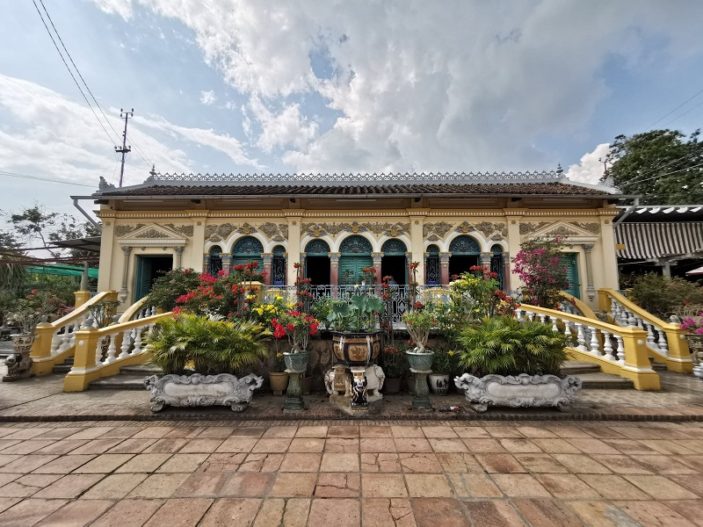
Can Tho, Vietnam may not be the first city on everyone’s bucket list, but don’t mistake it’s relative obscurity for anything but a lack of exposure. As the biggest city along the famed Mekong Delta, it is now enjoying a swift boost in interest from those looking to explore the diverse country, thanks to greater international access via a newly introduced four-times-weekly Air Asia service from Kuala Lumpur, which was introduced mid-2019.
Prior to the new service (which you can read about HERE), anyone looking to visit Can Tho would have had to take the 3 hour drive down from Ho Chi Minh City. Now, it’s just as viable to start in Can Tho and make your way up towards Vietnam’s famously high-octane and endlessly exciting city.
As a guest of Air Asia, I was able to explore Can Tho for a few days and pick out certain things I feel give a great overall picture of what you can do at the gateway to the Mekong Delta. Take note.
Sampan Tour
Although there are many land-based activities and points of interest, the best things to do in Can Tho will have something to do with the river, one way or another. Book in for a private Sampan tour if you want the quintessential experience, moving away from the Hau River and working through the small canals that make up the Delta. Riverside restaurants, stilt houses and orchards are plentiful along these picturesque stretches.
Cai Rang Floating Market
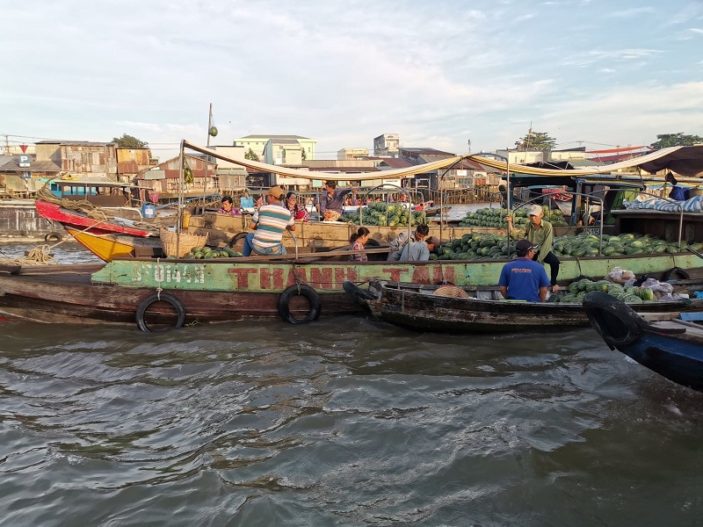
This should be one of the first things on your list, given it’s what this small city is most known for. A sprawling, early-morning marketplace set on the wide and central Hau river, the Cai Rang Floating Market is easy to navigate and highlights Can Tho’s strong agricultural industry.
The Mekong Delta has particularly fertile soil, which is why so much rich tropical fruits can be found in this region. This is the best place to sample all that beautiful produce, as boats make their way around floating cafes – many making potent cups of coffee from scratch – and barges with sightly bamboo poles (“beo sticks”) point to the sky, each displaying what produce is available.
From colourful stacks of fruits like pineapple and watermelon, to freshly made crab noodle soup and broken rice dishes, the array of hues that bop up and down on the gentle river is visually spectacular. Not to mention the various scents that waft in from every direction as sellers hook from boat to boat to offer their services.
Sau Hoai’s Rice Noodle Factory, Can Tho
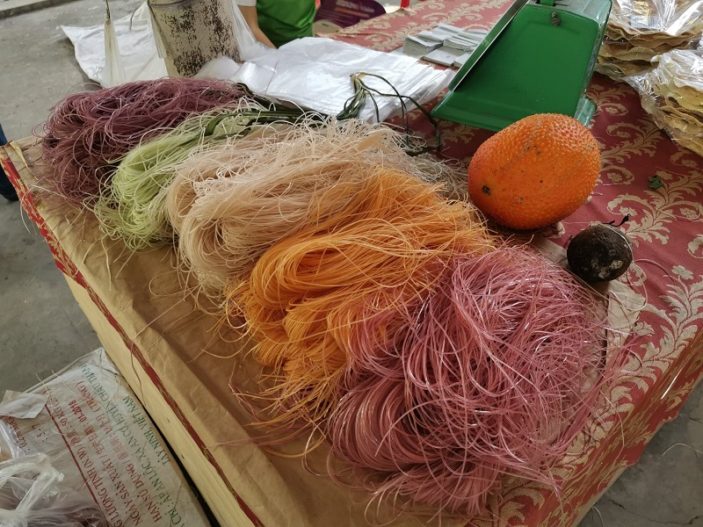
Walking distance from the Cai Rang Floating Market, this historic rice noodle factory is an essential stop for lunch and to see traditional ways of making rice noodles, with historic tools that you can learn to use.
There’s a great deal of local crafts available here too, but the best thing to do is order up a place of hou tiu, which is Vietnamese noodle pizza where rice noodles are used as the pizza base and then flavoured with coconut milk before being topped with various fresh ingredients like egg, pork, mint, peanuts and hot sauce. Those in love with Vietnamese coffee (that is, everyone who has been to Vietnam before) should be happy to know that this places makes an excellent brew.
Binh Thuy Ancient House

Although Can Tho isn’t exactly teeming with as much European influenced architecture as bigger cities like Hanoi and Ho Chi Minh, plenty of French signatures can still be found along the Mekong. The best example of this is the ornate Binh Thuy ancient house, standing at over 100 years old, having been built in 1870 to worship the Duong Family – still owners of the colourful house.
The house’s complex architectural style represents a unique cultural communication between the East and West, with motifs of both French and Vietnamese found throughout the interior, as well as the well-maintained orchard garden which wraps around the side of the buildings.
One of the most photogenic buildings in the entire region – possibly even the country – the house has been a bright feature in various works throughout its time, including The Lover by French director Jean Jacques Annaud.
Cồn Sơn Island

Authenticity is likely at the forefront of your mind if you’re exploring Can Tho in the first place. With more tourists – especially Aussie ones – valuing local experiences, the quiet and isolated islet of Cồn Sơn, packed with fish farms and quaint households, is an absolute must.
The vague path which takes you around the island will pass a few cafes, barking dogs guarding fish ponds (don’t worry, they aren’t attack dogs) and friendly locals who are usually swinging in small hammocks. Choose a café and you’ll likely be escorted to a cake-making area where you can learn to make some of the most famous desserts along the Mekong.
Spend a bit of time hopping between the cafes here; you’ll probably be invited by locals to try some homecooked meals too.
Khanh Tourist Village
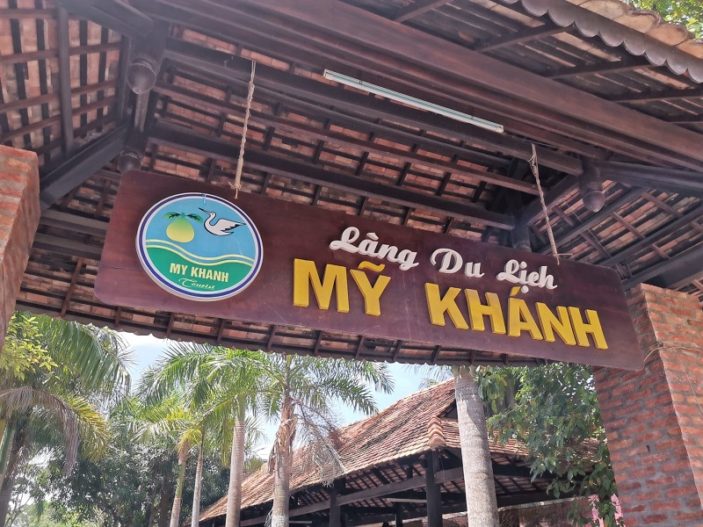
The Khanh Tourist Village is Can Tho’s version of a theme park with some zoo elements, a restaurant and various attractions. Electric vehicles are used to zip visitors between the many things to do here, which include visiting a crocodile farm, betting on pig races, and taking a dark (and slightly terrifying) water ride through what’s best described as a hellish version of Disney World’s iconic “it’s a small world”. Don’t worry, the crocodile farm is nowhere near.
Unfortunately, despite Can Tho’s status as an eco-tourism destination, they haven’t quite stamped out animal performances. Working your way through the village, you’ll likely see small circus-like performances involving monkeys and dogs.
Can Tho Museum

If you want to further explore Can Tho’s rich agricultural history, visit the Can Tho Museum. If you’re on a tour, get your English-speaking guide to come along so they can translate what the museum staff have to say when they walk through the various paintings, artefacts, and war remnants that are spread across the two floors. Perhaps the most insightful is a diverse display of instruments used on the many farms across the Mekong Delta.
Lung Cot Cau Tourist Area

Another unique experience you can do in Can Tho is head along to this popular spot, teeming with locals relaxing with their families, either having picnics, watching karaoke, or going for a swim. You can risk it by trying to cross a thin bamboo bridge, or change into traditional clothes and get muddy to try and catch snakehead fish with your bare hands.
Snakehead fish is a local delicacy here, so any that you manage to find can be given to the local restaurant where the kitchen will prepare your catch and turn it into a full meal.
Gian Gua Relic Site
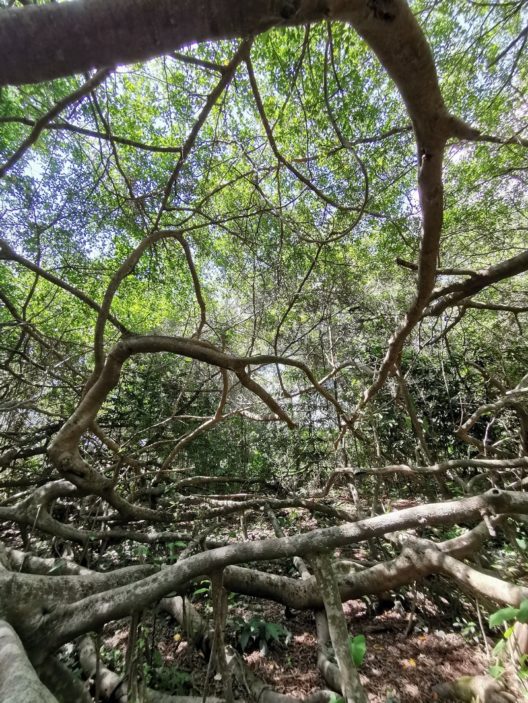
Da Nang has the frequently Instagrammed Golden Bridge (the one that rests on two enormous hands) constantly attracting tourists, and Can Tho has Gian Gua. Easily one of the most photogenic spots in the region, this historic 2,700 square meter ground is absolutely covered in snaking branches which come from just one gua tree.
Importantly, this remote area was once used to provide shelter and camouflage for Vietnam’s special forces to train between 1961 and 1965, as well as a base for Vietnamese soldiers who liberated Can Tho in 1975. As such, the site hosts regular services for war veterans.
Truc Lam Temple
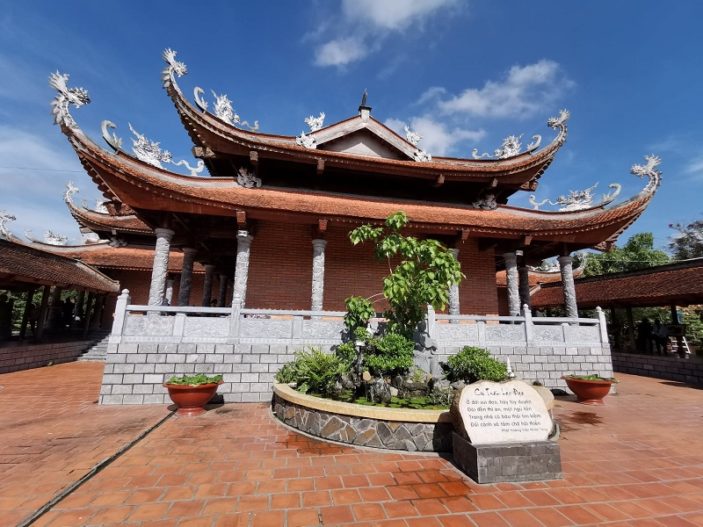
Vietnam’s largest Zen Buddhist monastery, the incredible Phuong Nam Truc Lam Zen Monastery stands just outside of the nearby resort town of Dalat. It’s only a short drive from the centre of Can Tho, and the attractive grounds contain many Buddha statues, bodhi trees and pagodas.
Stay at Azerai Can Tho
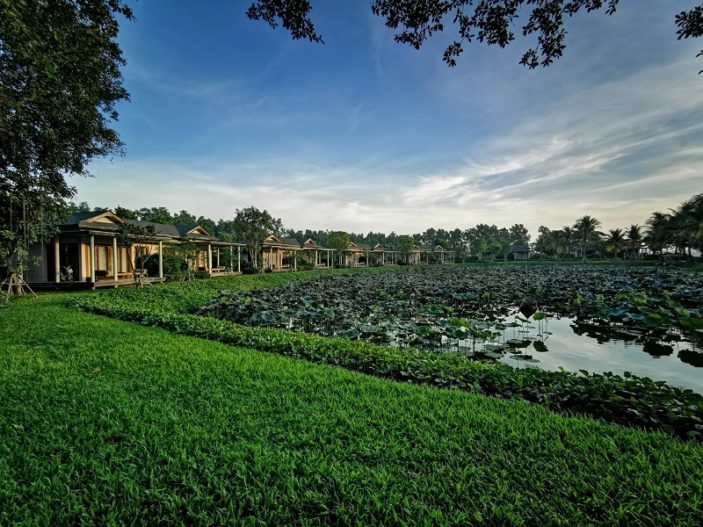
If you’re looking for somewhere supremely comfortable to stay then check into the relatively new Azerai Can Tho. This peaceful resort, focused on wellness activities and elegant boutique rooms, is located on a small inlet not far from the airport in the Cai Rang district. You simply take a private speedboat from the city, five minutes across the river to this gorgeous, modern property where you can organise many of the activities listed above.
Check out our full review of the resort HERE.
—–
For more information on the new Air Asia route between Kuala Lumpur and Can Tho click HERE.
The writer travelled to Can Tho as a guest of Air Asia
